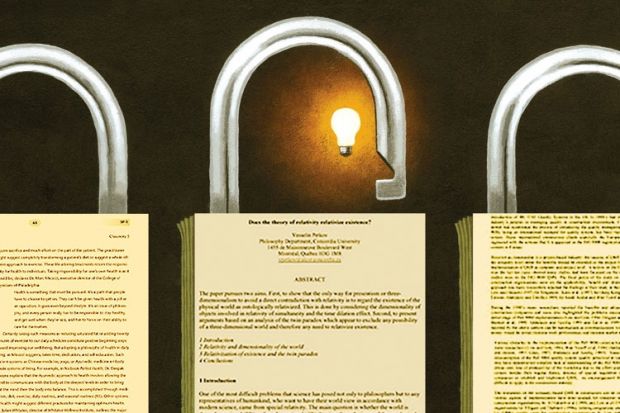Source: James Fryer
The common argument for open access revolves around the public’s right to access research it has paid for through taxes. However, open access might also enhance the public’s ability to contribute directly to science.
This is not pie in the sky. There are cases of outsiders coming up with fresh, important ideas that no one researching in the field had thought of.
Take Argentinian car mechanic and father-of-five Jorge Odon, who is behind one of the most significant developments in obstetrics in around 150 years. One day, when he was watching a YouTube video showing how to get a cork out of an empty wine bottle using an inflated plastic bag, it occurred to him that the technique might also be effective for pulling a baby out of the uterus when assistance is required. Hopes are high that his invention, if approved, will be an improvement on forceps (which can fracture the baby’s skull) and suction caps (which can cause scabbing on the baby’s scalp). As one obstetrician told the BBC: “Doctors are very structured in their thinking and Jorge is a free mind: he can think of new things.”
Then there is San Diego housewife Marjorie Rice, who used to read about mathematics problems in the Scientific American magazines to which her son subscribed in the 1970s. She became interested in a problem to do with tessellation: the phenomenon of entirely covering a blank space by arranging similar shapes next to each other. It was thought at the time that there were nine kinds of pentagons that would tessellate. With only a high-school education, Rice developed her own notation and used it to discover four more kinds.
Neither Odon nor Rice required access to the scientific literature to make their contributions. But their stories show that outsiders are sometimes able to bring novel thinking to science.
Other amateur discoveries have relied more heavily on access. In 2012, the story broke of a 15-year-old from Maryland, Jack Andraka, who had come up with a new test for pancreatic cancer. A friend of his family had died of the disease, and he was motivated to learn more about it. The story goes that he was sitting in class one day surreptitiously reading an academic paper about carbon nanotubes when he came up with his idea, which involves coating nanotubes with special antibodies.
He emailed 200 academics asking them to test his theory in their labs. One wrote back and agreed to work with him and, together, they found that Andraka’s test was 400 times more sensitive than the current one, and ,000 times cheaper. Since the paper that Andraka is writing on his discovery hasn’t yet been peer reviewed some questions remain, but many scientists agree that his idea is novel and intriguing.
But paywalls might have nipped Andraka’s enthusiasm in the bud had his parents been less indulgent. He has said the typical $35 (£21) cost of reading articles in subscription journals was a huge barrier to his research.
“Like any respectable teenager, I tried to pirate [papers I wanted],” he told the Wired 2013 conference. “When that didn’t work, I tried emailing the professor who would say that copyright prevented him from giving it away. I then…begged my parents [for the money]. And then I discovered the papers had nothing to do with my research whatsoever.”
Another famous case of amateur breakthroughs in the medical field was Lorenzo’s Oil. Augusto Odone was a World Bank economist whose son Lorenzo was diagnosed with ALD (adrenoleukodystrophy). He and his wife Michaela taught themselves neuroscience by visiting the National Institutes of Health library and ended up developing a treatment for the disease consisting of a mixture of olive oil and rapeseed oil, which they called Lorenzo’s Oil. It has been proved to be effective if a carrier of the genetic disorder takes it before ALD symptoms appear. But imagine how much easier it would have been if they could have accessed all the relevant papers at home. Imagine how many more people could follow in their footsteps.
There are some areas of science, such as research into Alzheimer’s disease, into which billions of dollars have been poured over the past 20 years with minimal progress to show for it. Perhaps what is needed is a bit more free thinking – more crazy ideas thrown in from left field.
It is true that if science is to become more porous, allowing in more ideas from outsiders, it would need a peer-review system that could deal with a higher variance of input. Many ideas submitted would be terrible. But occasionally there could be a brilliant fresh insight that changes the world in a way the insiders had never conceived of. We should do everything we can to make sure that happens. And making sure the rise of open access continues unabated is surely an effective catalyst.
Register to continue
Why register?
- Registration is free and only takes a moment
- Once registered, you can read 3 articles a month
- Sign up for our newsletter
Subscribe
Or subscribe for unlimited access to:
- Unlimited access to news, views, insights & reviews
- Digital editions
- Digital access to THE’s university and college rankings analysis
Already registered or a current subscriber? Login





